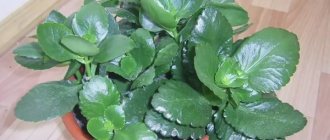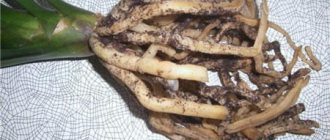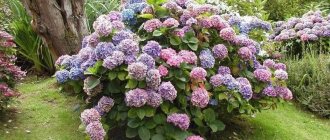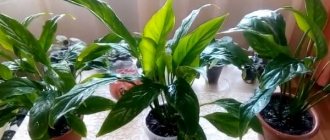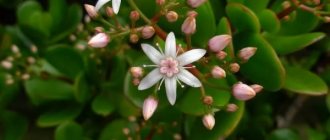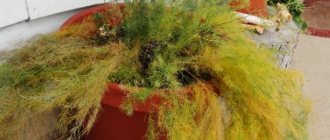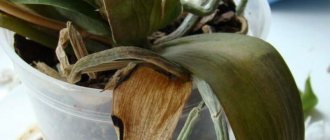One of the most beautiful indoor plants is Clivia, especially during the flowering period. In general, it is not difficult to master crop farming technology. However, mistakes made in care have a negative impact on the growing season of the flower, which is why it stops producing bright inflorescences.
What to do if Clivia does not bloom? The article describes common causes and ways to eliminate them.
Why doesn't clivia bloom?
The beautiful clivia is beautiful at any time of the year. Its amazing flowers and exotic-looking leaves are pleasing to the eye. Curving from the very base, they describe a beautiful and lush semicircle of a chic emerald color. And in the midst of this green splendor, an elastic arrow grows, on which a beautiful umbrella inflorescence is formed from bright flowers of the warmest summer shades. Clivia usually blooms in winter - it is precisely at this time that there is a lack of color and warmth.
In one inflorescence, which is formed on a long peduncle, there can be up to 20 flowers. In some varieties (Clivia nobilis, for example), inflorescences can have 60 flowers at the same time. With proper care at home, clivia blooms annually in February, and this period lasts up to 30 days. At the end of flowering, you definitely need to arrange a rest period for your beauty.
Natural causes
Sometimes it happens that a young clivia plant blooms for the first time in due time, but this does not happen again in subsequent years. Apparently, too early flowering plus the formation of seeds has exhausted the poor thing, and it does not have the strength to re-shoot the peduncle.
Experienced flower growers in such cases advise removing the arrow from the first year to give the opportunity to gain strength for subsequent flowering.
Hoping to bloom
Flower shops will most likely offer you blooming clivia. And in a year you will hope for the reappearance of a wonderful flower. But what a disappointment it will be if the clivia does not bloom.
In search of an answer to the question “Why doesn’t clivia bloom?”, you need to figure out what conditions the plant needs to form buds and flowers. This plant came to us from the tropical regions of Africa, which means that it is in such warm-humid conditions that it is most comfortable.
So, let’s create tropics in the apartment:
- For this flower you need to create diffused light. In nature, clivia grows under tall trees, where there is enough light, but the midday sun does not reach the plant. At home, it is better to place a pot of clivia on a windowsill near a window on the north side. The southern windows of your apartment are absolutely not suitable in this case. In summer, clivia is taken out to an open balcony and shaded on a hot afternoon - direct sunlight can burn the gorgeous leaves.
- Tropical air is always humid. Therefore, in the apartment it is necessary to set the humidity level within 40-50% (such indicators for the room are considered normal). As soon as the peduncle arrow begins to appear, the plant begins to be watered. During budding and flowering, the plant must be provided with regular and moderate watering: overmoistening the earthen ball will lead to rotting of the roots, but severe drying out will also not stimulate flowering. Water the clivia with settled water at room temperature.
- The soil in the tropics is saturated with sand. This circumstance is important to take into account when preparing a soil substrate for clivia at home. It must necessarily include turf and leaf soil and some coarse sand. It is imperative to make a drainage layer in the flowerpot - this flower does not like stagnant moisture near the roots.
- After the flowering period, the flower requires a period of rest. At this time, the plant rests and gains strength for new flowering. Under natural conditions, tropical winter sets in - a cool and dry time. At home, a flowerpot with an exotic beauty is placed in a cool place with a temperature of up to 10 degrees (not higher!) and stop watering. Moisten the top layer of soil only when it dries well. Often this is precisely the reason why clivia does not bloom. It is difficult to organize a tropical winter at home when the weather outside is still summer. In this case, the pot with the flower is taken out to a cool basement, not forgetting to water it from time to time. The rest period for clivia should last three months. The speed of the onset of the next flowering period and its duration largely depends on how correctly you organized the rest for your beauty.
At the end of such “hibernation,” the plant is again placed in a bright place and begins to be watered. They even recommend building a warm shower - but this must be done very carefully, trying to prevent the earthen clod from becoming waterlogged. Adult specimens of the flower can be kept in the cold until the first frost. Typically, the dormant period of clivia stops in November, the peduncle-stem begins to grow in January, and the plant blooms from the beginning of February.
It is important to end the dormant period for this plant in time and move it to a bright and warm room. A flower arrow that began to grow in a cold room will be crooked and short. In this case, it is better not to wait for the formation and growth of the peduncle to begin, but to strictly adhere to the time intervals. From the very beginning of the period of budding and subsequent flowering, the pot with the flower is not turned or moved from one place to another - during this period, clivia does not tolerate any disturbance.
The formation of buds and the duration of flowering at home also depends on the timeliness and quality of fertilizing. During the entire growing season, clivia is fed every two weeks, alternating the addition of inorganic compounds and organic matter. Attention should be paid to the introduction of potassium and phosphorus compounds - it is these elements in the soil that stimulate the flowering of this plant; nitrogen compounds, on the contrary, have a positive effect on the growth and size of leaves. Therefore, in order for clivia to bloom, it is important to provide it with potassium and phosphorus fertilizers - there should be much more of them in the fertilizing than nitrogen.
It is difficult to wait for clivia to bloom if the plant is grown from seeds. Such specimens can bloom only in the fourth year of life and this is considered normal. If the clivia is grown by dividing the rhizome (from cuttings), it may bloom earlier. To stimulate flowering, in some cases the dormant period can be extended to 4–5 months. But it is important not to miss the beginning of the appearance of the peduncle.
The reason for the lack of flowering of clivia at home may be that the flowerpot in which the plant sits is too wide. This exotic beauty prefers to grow in close quarters. After transplantation, the plant first strives to fill the entire pot with roots and only then blooms. Therefore, to replant a flower (more precisely, to carefully transfer it), narrow and shallow flowerpots are used.
Care
Caring for clivia at home is quite simple, unlike, for example, caring for exotic plants. The most optimal conditions for this plant are windows facing east or west in your home. You can also go north, the main thing is that the lighting is bright, but does not burn the plant. The optimal temperature for clivia is 20-25 ºC during the growing season, and 12-15 ºC during the dormant period. In summer, it is advisable for clivia to be in the fresh air, but in the shade.
How to water clivia? Don't worry about the humidity level, just wash the leaves to keep the plant looking neat. Do not over-water the plant, as the top layer of soil should be slightly dry. Before watering the plant, you need to settle the water, or better yet, boil it. During the period of flowering and growth, it is necessary to fertilize clivia, but some people overdo it, which is why clivia does not bloom a second time.
How clivia blooms
Clivia begins to bloom in late February or early March. A peduncle begins to sprout from the center of the rosette, which subsequently grows up to 40 cm in length. Small flowers appear at the very top of this peduncle. Usually there are about 30 buds on one inflorescence. Each bud is formed from 6 pink-orange petals, in the center of which long stamens are visible.
Clivia is a beautiful indoor decorative flower that will decorate any home.
Features of the flower
The clivia houseplant is an evergreen flower without a stem with dark flexible leaves reaching a length of 40 to 75 cm and a width of 5.5 to 8 cm. The leaves of the plant, located near the root, form a rosette and are in close proximity to each other, taking kind of a kind of stem. Clivia can have several peduncles with a ribbed structure; they can reach a height of 20 to 40 cm. The plants look like small umbrellas of 12-30 small flowers, which grow from 15 to 20 cm in diameter, they bloom gradually and bloom for two to three weeks. But sometimes something goes wrong, and quite logical questions arise: “Why doesn’t clivia bloom?”, “How should I care for it?”
Why does clivia not bloom at home?
Understanding the reasons for stopping flowering can sometimes be very difficult. Therefore, search engines often contain queries: “clivia, care at home, why doesn’t it bloom.” Indeed, despite the decorative appearance, flower growers often encounter problems with the lack of flowering of indoor flowers. What is the reason for this?
The main reasons for the lack of flowering in clivia:
- lack or excessive watering;
- hypothermia;
- pests;
- illness;
- lack of or incorrectly selected fertilizers;
- too young or old plant;
- lack of lighting;
- cramped pot.
Possible difficulties when growing clivia
When growing clivia, some gardeners who do not know all the intricacies of its maintenance may encounter a number of problems. So, if clivia does not bloom, it means that the dormant period was not spent correctly or the plant does not have enough nutrition, it is also possible that the air temperature in the room is too high or the lighting is poor. Browned tips of leaves, rotting stems and roots are formed due to excessive watering. A strong drop in temperature can affect the growth of flower stalks; they will be very short. Faded leaves with white spots indicate that the clivia has received sunburn.
The greatest concern for gardeners arises when clivia leaves turn yellow.
This can be caused by a number of factors:
- the plant is too old;
- excessive watering, which provokes rotting of the roots, which in turn leads to the death of leaves;
- lack of nutrition as a result of improper feeding regimen;
- obtaining seeds, which requires a large consumption of nutrients and energy from the plant;
- frequent changes in the location of clivia.
To avoid all of the above problems, you must strictly adhere to the recommendations for maintaining the plant.
Clivia is a long-time favorite of many flower growers, which, with little effort and time, delights with its bright, colorful blooms on a regular basis. Its inflorescences, framed by shiny leaves, radiate cheerfulness and light. In addition, even during the dormant period, it decorates any room with its decorative foliage, collected in a beautiful rosette, similar to a fan. At the same time, due to its unpretentiousness, it is perfect for growing by beginners, not yet quite experienced lovers of decorative indoor flowers.
The main reasons why a flower does not bloom
If clivia does not bloom, what should every owner of it know to do? But first you need to understand the reason for this plant behavior.
A cramped pot inhibits healthy growth
Improper care
Due to improper care, not only the peduncle suffers, which cannot open buds, but also the plant as a whole. It is very important to let the flower rest for at least 2 months a year, otherwise it will not be able to produce a peduncle.
Incorrect lighting is also one of the most important reasons for a bush’s inability to bloom. Clivia loves a lot of light, but not direct sunlight or prolonged exposure to the sun.
Note! Lack of lighting directly affects the lack of flowering, so it is necessary to take care of additional artificial light.
Violation of the watering regime
Lack of watering provokes a delay in the development and growth of the plant. The production of chlorophyll in the leaves stops and they begin to fade. The peduncle begins to dry out, sometimes the plant does not even have time to form inflorescences. If the buds are still able to bloom, as a rule, they are small in size, dry out quickly and fall off.
Excessive watering causes stagnation of moisture in the soil. If there is no loosening of the soil in the pot, the situation worsens and the plant develops root rot.
Incorrect application of fertilizers
In order for the plant to bloom well and in a timely manner, you should not fertilize with nitrogen-containing preparations before and during flowering. At this time, potassium is extremely necessary, which saturates the peduncle and buds with essential nutrients.
Diseases and pests
Diseases and pests are also one of the main reasons why clivia stops blooming. The flower does not particularly suffer from pest attacks; rarely, scale insects and mealybugs may appear on its leaves. They begin to eat the succulent part of the leaf blades and stems, causing the buds to crumble and the leaves to wither and turn yellow.
Among the diseases, clivia can suffer from root rot. The upper part of the bush stops growing and begins to wither, dark spots appear on the leaves and stems. The plant simply physiologically will not bloom under such conditions.
Alternating vegetative and dormant phases
During the dormant period, clivia, like other flowering plants, suspends its development. At this time, it is very important to provide the flower with all the necessary conditions so that it can rest. Subsequent flowering depends on this.
As soon as the bush fades, you need to remove dried buds, inflorescences and leaves. The pot itself is usually placed in a dimly lit room with a low temperature; you can place the plant on a closed loggia. The temperature of the subsequent clivia content should not drop below 12 °C.
During the dormant period, the bush must be watered and fertilized at least once a month. At this time, the foliage may turn slightly yellow, but do not sound the alarm. At the end of winter, the flower will return to normal.
Usually the rest period takes the entire autumn-winter season. As soon as the peduncle begins to appear, the wintering of clivia ends and a new season begins.
Important! The older the plant gets, the more time it needs to rest. For young flowers up to 4-5 years old, two months are enough to gain strength. This period usually begins in September or November and ends in early spring. Older plants are given more time for a dormant period.
Too young plant
In the first three years the plant usually does not bloom. Therefore, it is necessary to continue to properly care for the plant, and soon clivia will thank the household with beautiful flowering.
If the flower has been propagated and grown using seeds, you should wait even longer for flowering. Usually, at least 4 or 5 years pass from the period of sowing seeds and the appearance of the first bud.
How to make clivia bloom and what can be done
What to do to make a flower bloom
The main condition for the flowering of Clivia is the correct organization of the dormant period. Its duration depends on the age of the plant. For a young culture, two months are enough, for more mature ones - at least 3 months. From September, watering is gradually reduced, and then they stop moistening the soil altogether. The temperature regime also changes.
You should pay attention to the capacity of the pot. The flower does not enter the flowering period also because the roots are constrained. Clivia does not like disturbance, so you need to carefully transfer the bush to another container. The roots should not be freed from the soil, as they may be damaged. It is also better to avoid frequent changes of placement.
Moderate watering is needed, but such that the soil constantly evaporates moisture. Irrigation is carried out with warm water. To make the liquid soft, it is recommended to boil it first.
In winter, creating favorable conditions with the heating system on is quite difficult. Radiators dry out the air, making it difficult to reduce the temperature to the desired level. It is ideal to use the room on a glassed balcony or loggia. In a private house you can use utility rooms, greenhouses and a winter garden.
Eliminating the reasons why Clivia does not bloom
Measures to eliminate interference due to which Clivia does not throw out a peduncle are carried out depending on the identified reasons.
No rest period
Stimulating feedings
Timely introduction of fertilizing ensures intensive formation of buds and prolonged flowering. During the growing season, Clivia should be fed 1 r. in two weeks. The crop responds well to organic matter and mineral fertilizers, so it is recommended to use both types of nutrient mixtures alternately.
When choosing ready-made formulations, preference is given to fertilizers containing phosphorus and potassium. It is these elements that are necessary for Clivia to bloom.
Reference! Nitrogen fertilizing is important for increasing green mass. They are used to stimulate the growth of young plants. Nitrogen has no particular effect on the release of peduncles and budding.
Agrotechnical techniques
Clivia thrives in moderate temperatures. During the cold season, in the room where the flower pot is located, a stable temperature range of 14-16 degrees is established. During the flowering period, the temperature is increased to 18-19 degrees. In summer, the plant is taken out into the garden, choosing shady areas under the dense crown of trees or shrubs.
The flower needs good lighting, but the light should be diffused. When choosing a place for a pot with a crop, you should choose a window sill or balcony located on the north or west side. In winter, to prevent freezing, Clivia is placed in a bright room.
The flower needs abundant watering from spring to autumn. From the end of September, the intensity of irrigation is significantly reduced, or completely stopped until January-February. When the air temperature rises above 20 degrees, moisten it daily in moderate quantities using a watering can or spray bottle.
When replanting a plant, the pot is filled with a mixture that includes: leaf soil (4 parts), sand (1 part), turf soil (8 parts). Sand or gravel is first added to the bottom to create drainage.
You can determine the need to replant Clivia by the roots crawling out of the pot.
Fertilize the flower in the first year of life 1 r. in 1-2 months. From the second year, fertilizing is applied every 2 weeks. To stimulate growth, nitrogen compounds are used; to activate flowering, potassium-phosphorus fertilizers are more suitable.
What to do and how to make clivia bloom
Ways to make clivia bloom:
- send the flower to rest on its own, slowly reducing watering and temperature. This method will help a tired bush gain strength and begin active growth again and bloom in a timely manner;
- After the arrow of the peduncle appears, you must carefully wash the bush under warm water in the shower. Then increase the regularity of watering and fertilizing. The first feeding should contain a high level of potassium. The element is contained in the following fertilizers: potassium sulfate, potassium chloride and potassium salt;
- If the flower is supercooled, you cannot sharply increase the temperature of its contents. This is done gradually, with regular airing to harden the bush. To prevent a decrease in the humidity level in the room, it is necessary to place a wide container of water next to the flower or periodically spray the bush with a spray bottle;
- in situations where the reason for the lack of flowering is a cramped or, conversely, too spacious pot, an urgent transplant is necessary. In the first years of life, it is necessary to replant the bush every spring, as the plant is actively developing and growing quickly.
Diseases
Clivia diseases are associated with improper care. For example, waterlogging of the nutrient substrate can cause gray rot to appear in the crop. Signs of this disease are determined by a dirty coating on the surface of the leaves.
In this case, the flower is removed from the flowerpot, the damaged parts are removed, the remaining vegetative organs must be sprayed with fungicides, for example, the drug “Fundazol”.
Of the pests, Clivia is affected by mealybugs and scale insects. The result of their vital activity can be seen by the deformation or drying of the leaf plates. The way out of the situation is to treat the leaves with an alcohol swab or soap solution. After such operations, the flower is bathed in the shower. If this does not help, use the insecticides “Biotlin” or “Aktara”.
The leaves are turning yellow
Yellowed leaves often appear on the crop after replanting. Adding a small amount (a couple of drops) of a growth stimulator to the irrigation liquid will help correct the situation. The same problem arises as a result of improper watering - the earthen ball should not dry out.
Important! Yellow leaves on clivia often appear when there is a deficiency of nutrients in the soil, so the gardener must follow the fertilizing regime.
Does not form buds
The lack of flowering is associated with a short dormant period, high room temperature, excess nitrogen in the soil and improper lighting. Eliminate all these problems, and clivia will begin to bloom in due time.
How clivia blooms, flowering conditions
For young plants, flowering is typical once a year, but when the clivia is older, it will produce arrows with buds twice, the main condition is that the crop is completely healthy.
What does clivia look like?
In October-November, the tropical beauty begins a period of rest. Clivia forms a flower arrow in the fall. As soon as it grows to a height of 10-15 cm, the plant is moved to other conditions and abundant watering begins.
Transferring a flower before the arrow has fully grown is not recommended. All the owner must do is ensure infrequent and not too abundant watering.
Worth knowing! With a sharp change in temperature, the development of buds may stop.
If the plant was left dormant at room temperature, then it is necessary to increase the frequency of watering. To do this, use warm water. It stimulates the formation of a peduncle.
Peduncle of clivia
Basic requirements for clivia content
Clivia is a tropical South African plant. As a result of breeding work, varieties with light yellow or dark orange flowers were developed. Clivia has shiny, dark green leaves. Once a year, in February-March, the plant produces an inflorescence consisting of many orange, cup-shaped flowers. The height of the bush is up to 50 cm, 5-6 new leaves grow on it per year.
Requirements for growing conditions for clivia:
- Clivia blooms best on a northern windowsill.
- During the calm period (at the beginning of winter), clivia requires a temperature of +7...+10°C. When the inflorescence appears, the room temperature should be raised to +15°C. In summer the maximum temperature should be +21°C.
- During the dormant phase, the soil in the pot should be slightly moist; for this it should be watered moderately once every two weeks.
- When clivia blooms, and later, throughout the growing season, the bush is watered at least once a week.
- During the summer, clivia is fed with liquid fertilizer, combining feeding with one of the waterings.
- Clivia needs air humidification in summer, so it is recommended to place the pot on pebbles lying in a tray of water.
- Periodically, the wide, fleshy leaves should be washed by hand with a sponge dipped in warm water.
The main reasons why a flower does not bloom
Peduncles may be absent for a number of reasons, not just because of unsuitable conditions for the plant. Clivia home care why doesn't it bloom?
Improper care
Lighting plays an important role in ensuring proper care. Its deficiency leads to slower flower growth. He will wait for acceptable conditions. The culture needs bright light, but it must be protected from direct sunlight.
On a note! At the end of May, the container with the flower is placed so as to avoid the sun hitting the plant. There should also be no excessive shadow, otherwise the flowers will not appear.
In second place comes soil and a container for planting. If the clivia in the pot does not have enough space for the root system to grow, or the soil does not have the necessary nutritional components, then the plant will not be able to bloom. The recommended soil mixture should consist of the following components, taken 1 part at a time:
- loam;
- peat crumb;
- coarse sand;
- compost.
The absence of a resting phase negatively affects the flower. The tropical beauty needs rest in a cool place at home. After returning to normal conditions, most often the crop will bloom.
Peat crumbs - the basis for the soil mixture
Violation of the watering regime
The same watering regime is not suitable for this plant. To make it feel good, it is recommended to adhere to the following scheme:
- abundant watering in summer;
- from August the frequency of watering is reduced;
- in the winter months, moistening is carried out at the moment when the soil in the container with the flower becomes dry;
- from the end of winter the number of waterings increases.
Helpful advice! To prevent the formation of root rot in the autumn and spring, excess water is poured out of the pan. Replanting the plant during flowering is strictly prohibited.
Incorrect application of fertilizers
Why doesn't clivia bloom? Excess or lack of fertilizing is harmful to the plant. Due to frequent application of fertilizers, leaves will grow well, but to the detriment of the development of the peduncle. The best option for adding nutrients is at the roots. It is practiced during the period when the flower is rapidly growing (spring-late July) once every 14 days. In August, they stop feeding clivia so that it has time to prepare for the dormant period.
Fertilizers are necessary for regulation
Diseases and pests
Gardeners often encounter the following clivia problems:
- mealybugs;
- root nematodes;
- scale insects;
- viral infections;
- fungal infections.
Viral diseases are often spread by insects, or with equipment that has not been disinfected. Such ailments cannot be treated, and therefore the flower is destroyed.
A cold room or excessive watering leads to the formation of fungus. Infected clivia is transferred to other conditions. Trim the affected leaves and treat the plant with a fungicidal agent. Due to all of the above reasons, a tropical crop may not bloom.
Does the plant rest, alternating vegetative and dormant phases?
A room with normal room temperature is quite suitable for keeping clivia. During the growth period, the flower needs to increase the indicator from +20 to +25 ℃. In October, the plant begins a dormant period and then the temperature is reduced to 12-14 ℃ above zero.
Plant species
https://www.flickr.com/photos/dese/17356800992/ Yellow clivia is much less common than orange.
Some species included in the genus Clivia have long been used as ornamental crops and are effectively grown not only in greenhouse conditions, but also in ordinary apartments. The list of popular ones includes:
- Beautiful or noble clivia. It was with its discovery that botanists began to become acquainted with this beautiful plant. It is low, reaches 30 cm in length, the leaves are xiphoid, and there is a narrowing towards the edge. The leaf blades have a rich dark green hue and reach 40 cm in length and 6 cm in width. The peduncle is tall, reaches 50 cm in height; an umbrella-shaped flowering is formed on its edge, including 40-60 tubular flowers.
- Clivia cinnabar. Opened in 1850. A well-known representative of the genus, it is considered the most adapted for growing at home. South Africa is considered the birthplace of the plant, where it is found in mountainous regions and off the coast. Under natural conditions it reaches 50 cm in height, but when grown in a pot it has a more modest size. The flowers are red or orange with a yellow throat inside, collected in inflorescences of 10-20 pieces. It is interesting to note that this variety is capable of producing several flower shoots at once.
- Clivia Gardena. Named after Robert Garden, who discovered the plant in the province of Natal in 1856. Distributed in shady foothill areas at an altitude of up to 1300 m above sea level. Externally, the plant is somewhat different from the described species; it has light green leaves with a cut along the lower third. Due to the formation of a dense stem, it forms a rosette, represented by a thick tuft. Reaches 50 cm in height, the length of the leaves in natural conditions reaches 1 meter, when grown in a pot no more than 40 cm. This variety is rarely grown at home, despite its relative unpretentiousness in comparison with other species.
- Clivia stem. Discovered in 1943 in a humid area of the northern and eastern provinces of South Africa. Under natural conditions it grows in mountainous areas, is a semi-epiphyte, and can be located on tree trunks. Rarely cultivated at home, but takes pride of place in the collections of botanical gardens.
- Clivia is amazing. A new variety, only discovered in 2002, growing in the arid regions of northwestern South Africa. It is distinguished by the absence of special requirements for living conditions, calmly reacts to drought, tolerates direct sunlight, and in summer can withstand temperatures above 40 degrees. In winter, it tolerates short-term frosts.
- Clivia is powerful. Previously it belonged to a different genus, but later, using a DNA test, it was determined that it was a separate variety. In appearance it is similar to the beautiful clivia, but its size is more impressive, reaching 1.5 m in height. Does not tolerate excessive drying of the soil and grows in swampy regions.
https://pixabay.com/photos/clivia-miniata-belt-sheet-klivie-44978/ Clivia buds bloom quite slowly.
Varieties with yellow tints are especially popular among gardeners. Most often this is the result of the painstaking work of breeders. In home collections you can find varieties with the following names:
- Jenny - deep orange flower with a pronounced yellow center;
- Doris - red-orange flower with a yellow throat;
- Abigail – salmon color with a bright yellow center;
- Summer Surprise - large-flowered variety, tubular inflorescences have a flap, the middle is yellow;
- Nakamura Red - rich red flowers with a faint yellow stripe;
- Kirstenbosh Yellow is a popular, fragrant yellow-flowered variety that grows slowly;
- Natal Yellow – soft yellow flowers with a pronounced middle, characterized by lush flowering, the corollas collect up to 30 inflorescences;
- Solomon Yellow - characteristically sunny yellow flowering, the buds last a very long time (there is a rare, variegated variety of this variety on European markets, its leaves have a pronounced yellow stripe).
https://pixabay.com/photos/clivia-miniata-color-po-flowers-706164/ It is recommended to cut off the flower shoot when the buds are in full bloom, this is necessary to prevent the formation of a seed box.
Relatively recently, white or cream varieties appeared on the market. Their list includes the following names:
- Milk White – characteristic milky white color;
- Snowball – flowers are almost snow-white, with a faint creamy tint;
- Mopi hirt – white petals of buds, framed in pink, have a yellow center;
- Japanese pastels is a delicate variety that blooms in pastel white clusters.
What to do and how to make clivia bloom
If the plant never reaches its flowering period, you need to make sure that the growing conditions are completely suitable for the tropical beauty. If any shortcomings are identified, they are eliminated and favorable conditions are created.
Clivia does not bloom, what should I do? You need to try changing the growing conditions:
- ensure good watering in the summer months;
- regularly apply fertilizing at a strictly designated time;
- make bright lighting with protection from direct sunlight;
- minimize the impact of harmful insects;
- monitor shrub health indicators.
Having understood all the possible reasons for the lack of flowering in clivia, every lover of indoor plants will be able to provide the right help to their green pet.
Vegetative method of propagation
The vegetative method of propagation in plants is the easiest way to propagate indoor plants. It consists of carefully separating the lateral shoots from the mother root and transplanting them into a separate pot. For the vegetative method, plants that have reached the age of three to four years are suitable. Separated shoots should be transplanted into pots 7 cm in diameter and cared for as you would care for an adult plant. The only caveat is that the sprouts need less moisture, but more light. Young clivias transplanted by the vegetative method will bloom after three or four years.
Photo of clivia flower and interesting facts
When you see a photo of a clivia flower, a houseplant, you involuntarily begin to look for this miracle. The fan of leathery leaves up to 75 cm long and a huge cap of bells of different sizes on a long arrow are delightful. Over the course of a week, large gramophones gradually open and delight with their appearance for about a month. In winter, when there are so few bright colors, clivia attracts admiring glances from household members. Read: clivia photo care at home!
Signs and superstitions
As for superstitions, the plant is not recommended for young married couples to keep in their apartments. According to popular belief, clivia contributes to an unfavorable environment in the apartment. But this opinion is not confirmed by anything.
Clivia is a poisonous plant. When contacting it, it is worth considering that the juice of its leaves can provoke various allergic reactions and poisoning of the body.
In conclusion, it is worth noting that with proper maintenance, home clivia will delight its owners with lush and luxurious flowering. This plant lives for 40 years, and delights its owners with beautiful leaves, numerous flowering bells and ease of care.
Clivia flowering conditions
To admire the beauty of a flowering plant every year, you need to know a lot. If the plant does not receive proper care, a victorious flowering, as in the photo, may not be expected from the clivia flower. It is necessary to create natural conditions for the plant, as in the tropics:
- under the canopy of tall trees, the light and bright rays of the sun are scattered without burning the leaves;
- evaporation comes from the ground and the air is always humid;
- warm rains wash the leaves;
- heat rises from the damp forest floor;
- excess moisture is filtered deep through the sand;
- the season of prosperity gives way to drought and low temperatures.
If you are ready to create tropics at home, then the clivia in the photo will look like a flower from a fairy tale.
Transfer
Replanting a kaffir lily will not be difficult, for this:
- The plant is watered abundantly so that the soil absorbs moisture and makes it easier to remove the root system from the old pot.
- The roots are washed with water and if there are rotten areas, they must be carefully trimmed.
- It is necessary to place drainage in the new container, which will occupy a quarter of the pot in height. Next, the drainage is covered with 3-4 cm of soil and a clivia is placed on top. All voids must be filled with earth.
You can read in more detail about the features of clivia transplantation here.
Why does clivia not bloom at home?
Experts call the first and most common reason for the lack of flowering a violation of the plant’s biological cycle. To ensure flowering in the middle of winter, you need to create a tropical winter in your apartment. This means that the clivia flower is kept in spartan conditions for 3 months. Gradually reduce and then completely stop watering the soil. The temperature at this time drops to 10 0 C. In an apartment, such a place can be the north window or the far corner of a cold room.
Wintering is over, how to make clivia bloom? The plant is removed, washed often with warm water from the shower, watering is gradually increased and seasonal fertilizing is done. The faster the arrow develops, the greater the opportunity to create secondary dormancy and organize summer flowering. Each subsequent flowering is preceded by a period of dormancy.
In addition to maintenance violations, other factors may be the reason why clivia does not bloom.
If the flower arrow is very short and the flowers are nested between the leaves, the temperature of the content is to blame. We didn’t notice the arrow in time and kept the flower in the cold. So we got a short crooked peduncle. Another reason may be a lack of potassium and phosphorus fertilizers in the soil. They should prevail over nitrogen ones. But if the flowering is short, then the high temperature on the window is to blame.
As soon as the plant with the arrow released is arranged for summer maintenance, it is no longer disturbed or even turned.
What to do if clivia does not bloom at all? If the plant is young and obtained from seeds, it will bloom in the fourth year. Flowers grown from layerings should shoot out even earlier. If there is no flowering, you need to make a long dormant period from October to March. And before that you should feed with phosphorus-potassium fertilizers. It will bloom! As soon as the arrow appears, the plant needs to create a tropical summer.
Maybe the plant was planted in a large container, and until it fills the cavity with roots, there will be no flowering. Only tight containers will provoke rapid propagation of the plant by seeds to other clearings.
For clivia, the optimal humidity is 40%. However, this parameter is not critical for flowering
You need to study your roommate. Not all varieties bloom twice. It is useless to drive out a flower against nature.
Other reasons why clivia does not bloom include damage to leaves and roots by diseases and pests. The leaves have turned pale, which means they are not producing enough nutrients. But maybe it’s the roots that have rotted from stagnant water that are not working well. Maybe insect pests are drawing juices from the plant. Any deviation in the care of clivia affects flowering.
Advice from experienced flower growers
The best stimulation for Clivia to bloom is proper care and timely treatments. The best helpers in this matter are the advice of experienced flower growers.
- When moving the pot to another place, the side that was illuminated before is placed in the light.
- The container for the flower is selected with the same parameters as the root system. It should completely fill the volume. This is due to the fact that the roots are adapted to retain moisture.
- After releasing the arrow, you need to gradually restore watering to the plant, change the air regime to 15-17 degrees. Due to insufficient irrigation or cold weather, the flower stalk may become stuck inside the leaves.
- The life cycle of Clivia reaches 40 years. In adulthood, the bush is not replanted so as not to harm it. Fertilizers are regularly added to the tub, and a 4-month rest period is organized once a year. This is enough to continue entering the flowering period.
- On hot summer days, it is advisable to take the flower pot out into the garden in the shade of tall plants. This way the crop can more easily withstand high temperatures. “Baths” will be beneficial. From the shower, the leaves are washed with a warm stream. You can also wipe the leaves with a damp sponge.
- A blooming Clivia cannot be transplanted into another pot. Even if the roots have come out of the container, you need to wait until the inflorescences wither.
With proper care, Clivia will delight the eye with beautiful blooms for many years and complement the interior with bright colors.
What varieties of clivia are used at home?
Of the numerous varieties of clivia, only three beautiful varieties coexist next to people:
It should be borne in mind that the plant is poisonous and should be placed in a place inaccessible to children and animals.
Clivia Gardena blooms only once, in winter. It has wide leaves that resemble a belt, and a tall peduncle with a basket, as in the photo. No amount of tricks will force you to release a peduncle twice.
A characteristic feature of cinnabar or variegated (as a variety) clivia are clusters of drooping flowers. They are collected in tubes, petals with green at the tips. There are 30-70 such bells on a peduncle. Shades of red and yellow create picturesque combinations. This type of clivia is a favorite among breeders.
When buying a flower, you need to weigh in advance the possibility of creating conditions for keeping the plant happy with its annual dazzling flowering.
Botanical description
The name of the genus Clivia was given by the botanist John Lindley, who named it in honor of Duchess Charlotte Clive (governess to Queen Victoria). She was famous for her passion for floriculture.
Reference. The genus Clivia differs from various representatives of the amaryllis family in the absence of a bulb. In return, the flower has powerful and fleshy leaves at the base, which grow like a pigtail and form a strong pseudostem.
Under the ground, clivia develops a white and thick fleshy rhizome, to which thickened leaf bases are attached. Clivia flowers are bell-shaped and collected in an umbrella inflorescence of 20-60 pieces per peduncle. Flowering begins in February - March and continues throughout the month. When nature is still just preparing for the process of awakening, clivia blooms and delights its owners.
Read about the most beautiful types of clivia: Cinnabar, Nobilis, Gardena in our material.
